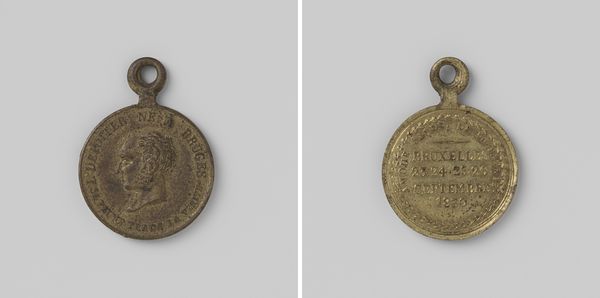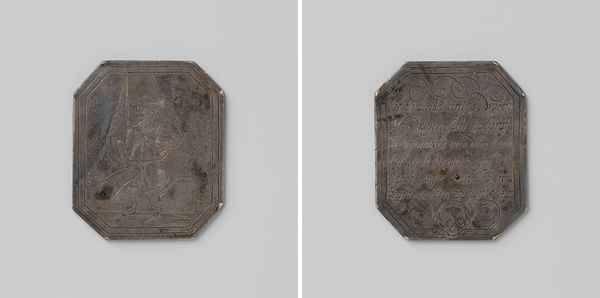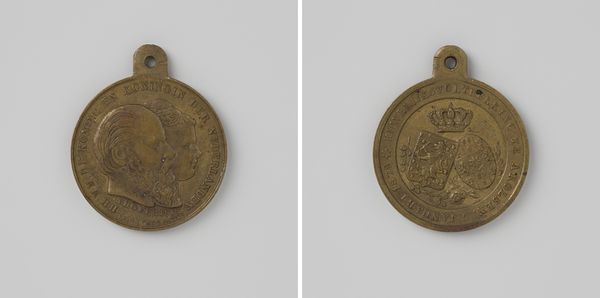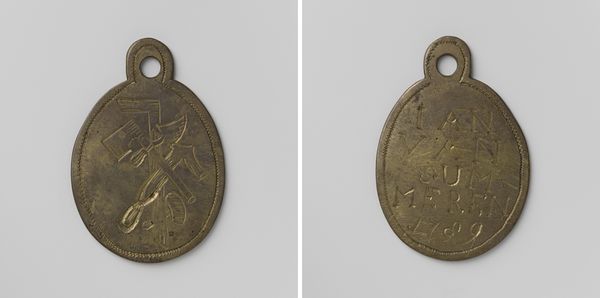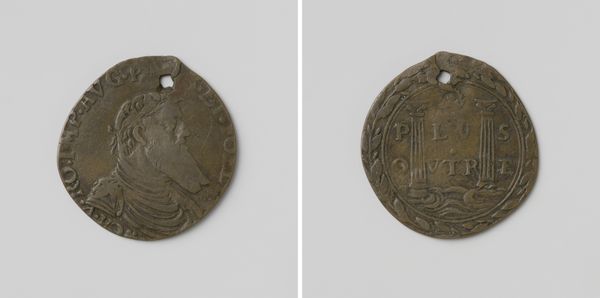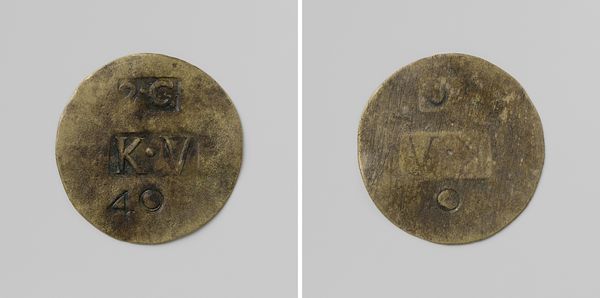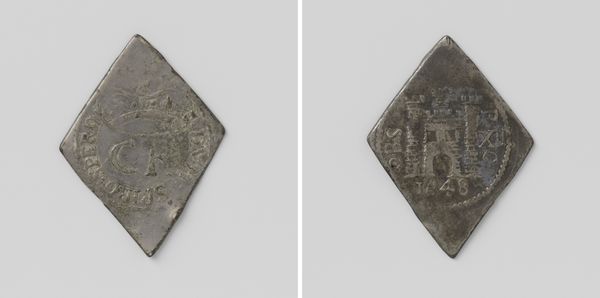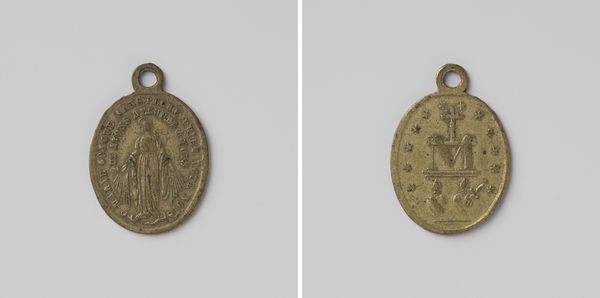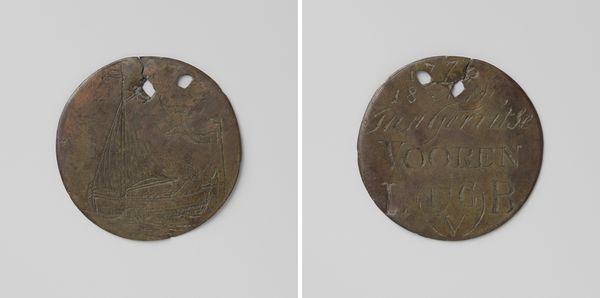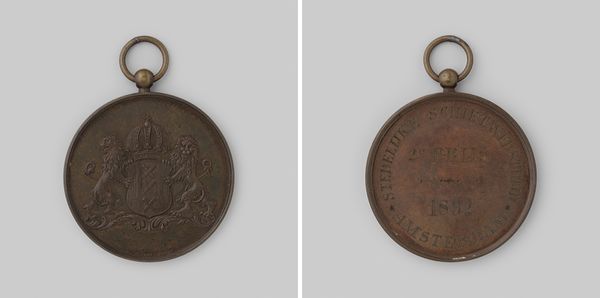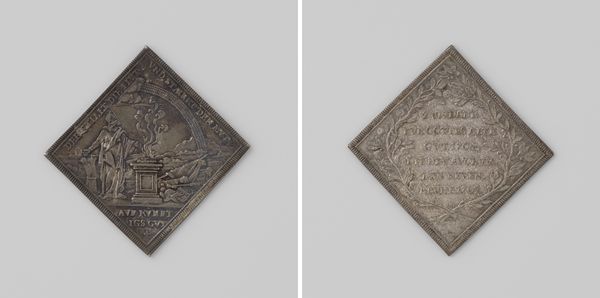
metal, sculpture
#
portrait
#
neoclacissism
#
metal
#
sculpture
#
sculpture
#
history-painting
Dimensions: length 2.8 cm, length 2.3 cm, width 2.1 cm, weight 4.84 gr
Copyright: Rijks Museum: Open Domain
Curator: Let’s examine this medal commemorating "The Transfer of the Body of Napoleon Bonaparte from St. Helena to France." It’s crafted from metal and dates back to 1840. Editor: At first glance, it appears to be an exercise in austere portraiture. The metal presents an interesting texture with a muted color. The face, almost sculptural, stands out from this simple pendant of an angular design. Curator: Absolutely. It’s fascinating how Vincard captures Napoleon's image within this historical moment. Consider the societal and political atmosphere. The July Monarchy, seeking legitimacy, orchestrated the return of Napoleon's remains as a unifying gesture. Editor: I'm more captivated by how the light catches the relief of the profile. The artist demonstrates careful tonal gradation in such a confined space, emphasizing the sternness of Napoleon’s gaze. And that unusual, almost industrial shape... the hexagonal frame contrasts with the classical aspirations of the portrait itself. Curator: The hexagon likely carries symbolic weight, too, a calculated visual move designed to position the monarchy within a complex historical narrative and evoke a sense of strength. It’s an interesting example of how even seemingly simple objects can convey multifaceted political messages. These pendants, readily available and distributed, would allow the people to physically participate in Napoleon's renewed legacy, and show how public image creation became easier at that time. Editor: Perhaps. Though for me, it all comes back to form. I'm struck by the precision required to carve that portrait into such a tiny surface, to make an instantly readable portrait using only shadows and angles. What about the inscriptions? I can notice words behind his bust. Curator: Ah yes, that further reinforces its historical function. The text specifies details of Napoleon's death, his burial location, and the subsequent repatriation. The symbolic value would contribute heavily to France’s reshaping identity in that era. The cult of personality around Napoleon helped consolidate social solidarity. Editor: In the end, regardless of function, it still operates on an aesthetic level. That is, an arrangement of planes and shadows can convey character. The strategic text contributes to a kind of framing for his stoic legacy. Curator: Yes, indeed. A seemingly humble commemorative object, charged with political significance and rendered artfully for popular consumption. Editor: Ultimately, it’s an intriguing fusion of craft and cultural phenomenon. Thank you for the insight, these two perspectives show a complex understanding of the piece.
Comments
No comments
Be the first to comment and join the conversation on the ultimate creative platform.
